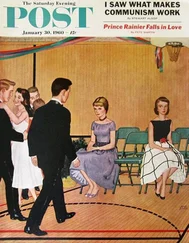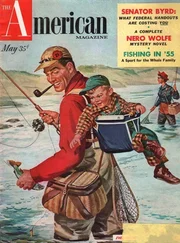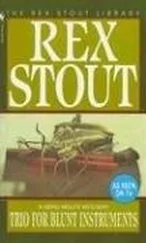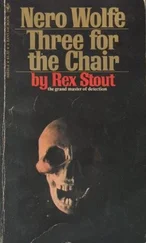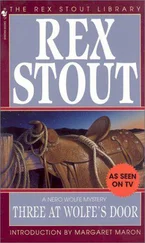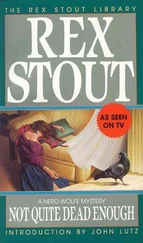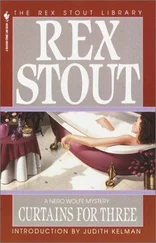Rex Stout - Three Witnesses
Здесь есть возможность читать онлайн «Rex Stout - Three Witnesses» весь текст электронной книги совершенно бесплатно (целиком полную версию без сокращений). В некоторых случаях можно слушать аудио, скачать через торрент в формате fb2 и присутствует краткое содержание. Жанр: Старинная литература, en-GB. Описание произведения, (предисловие) а так же отзывы посетителей доступны на портале библиотеки ЛибКат.
- Название:Three Witnesses
- Автор:
- Жанр:
- Год:неизвестен
- ISBN:нет данных
- Рейтинг книги:3 / 5. Голосов: 1
-
Избранное:Добавить в избранное
- Отзывы:
-
Ваша оценка:
- 60
- 1
- 2
- 3
- 4
- 5
Three Witnesses: краткое содержание, описание и аннотация
Предлагаем к чтению аннотацию, описание, краткое содержание или предисловие (зависит от того, что написал сам автор книги «Three Witnesses»). Если вы не нашли необходимую информацию о книге — напишите в комментариях, мы постараемся отыскать её.
Three Witnesses — читать онлайн бесплатно полную книгу (весь текст) целиком
Ниже представлен текст книги, разбитый по страницам. Система сохранения места последней прочитанной страницы, позволяет с удобством читать онлайн бесплатно книгу «Three Witnesses», без необходимости каждый раз заново искать на чём Вы остановились. Поставьте закладку, и сможете в любой момент перейти на страницу, на которой закончили чтение.
Интервал:
Закладка:
Rex Stout
Three Witnesses
Introduction
WHEN I WAS ASKED to introduce the novellas in this collection, I felt wary of the ominously titled “Die Like a Dog,” which I had always imagined to be yet another better-left-unread mystery in which my favorite character, probably a German shepherd, would rapidly and gruesomely perish in some misguided foreshadowing of the so-called real murder. To reassure myself on the crucial quadrupedal point, I read the third of these novellas first. Delighted to discover that I could recommend it to even the most tender-hearted dog lover, I turned to the beginning of Three Witnesses only to find myself assailed by self-doubt. In every Rex Stout I had ever read, Archie Goodwin had ably performed the introductions with no help from me. I was thus relieved to discover that, despite their doglessness, the first two novellas in Three Witnesses required a few introductory remarks that I was, after all, qualified to make.
“The Next Witness” and “When a Man Murders…” may unintentionally mystify the reader raised in the era of telephonic electronics, digit dialing, and workshops in model mugging. Back in the old days, young reader, answering machines had not yet been invented, telephone exchanges bore evocative names like Rhinelander and Gramercy, and the women who operated switchboards were quaintly known as “girls.” In those days, too, a lady who picked up a cigarette thereby compelled the nearest gentleman to offer her a light rather than a lecture on the hazards of second-hand smoke or a query about nicotine patches. I must also inform the young reader that although most of the “females” and “girls” in the world of Nero Wolfe are manipulative, neurotic, mendacious, or vacuous, Rex Stout was not actually scheming to do them in by encouraging them to smoke. As for the method of dealing with “hysterical” women that Archie employs in “When a Man Murders…,” I can say only that if Archie tried anything like that today, mystery fiction would lose one of its most engaging narrators.
How, then, does Rex Stout continue to enchant readers of both sexes and all political persuasions? In part by treating men and women alike as objects of critical scrutiny. More important, however, Stout simultaneously confers on the reader-any reader, male or female-so flattering a sense of membership in the vivid quasi family of Wolfe’s menage that the honored adoptee eagerly overlooks, forgives, or treasures the characteristics that define and preserve that orderly universe: Wolfe’s misogyny, Archie’s women-as-objects chauvinism, even Stout’s formulaic plots.
These three witness-centered novellas offer three radically different perspectives on the center of that universe. In “The Next Witness,” the agoraphobic, gynophobic Wolfe endures the discomfort of leaving home and suffers the intolerable sensation of finding himself seated next to a “perfumed woman.” In contrast, “When a Man Murders…” presents the Nero Wolfe most characteristic of the series, the at-home Wolfe who retains his distance from the human specimens that appear before him.
Except in one respect, “Die Like a Dog” is also stock Stout. A murder occurs. So what? The mystery might have been written to illustrate the maxim that nobody cares about the corpse and to refute the theory that the puzzle element accounts for the genre’s appeal. The exception is the charming Labrador retriever variously called Jet, Bootsy, and-tellingly, I think-Nero, perhaps the most fleshed-out nonseries character Stout ever created and a dog relegated to none of mystery’s hackneyed canine roles. Not the not-quite-victim I had expected, neither is this dog a transparently human character in canine guise. In mystery after mystery, the dog is no character at all but is what psychoanalysts might call a “part object,” a nose that sniffs or jaws that menace; or an apparently lifeless possession, a sort of fuzzy umbrella meant to suggest the owner’s personality. Ever since “Silver Blaze” dogs have been doing nothing in the night; but in subsequent mysteries countless dogs have done nothing in the daytime, either, thereby creating no incidents, curious or otherwise. Rather, they have sat around like pieces of furniture, perhaps periodically wagging their tails as woofy cuckoo clocks. As objects of fear, dogs have at least come to life, but from the hound of the Baskervilles on, these supposedly menacing creatures have rebelliously endeared themselves to the readers they were supposed to frighten. The hound, for example, is certainly one of Doyle’s most popular creations, and Baskerville remains a name lovingly bestowed on gigantic dogs.
Jet, however, is a canine witness portrayed with a dog lover’s enthusiasm and a dog fancier’s accuracy. An unmistakably real dog, this rain-loving, hat-fetching creature is equally recognizable as a Labrador retriever, probably a Labrador drawn from life, perhaps even one of Stout’s own, as Reed Maroc, Rex Stout’s grandson, recently suggested to me. In any case, Stout knew the breed, and Nero Wolfe knows his dogs. In discussing the skull of the Labrador retriever, Wolfe almost quotes the official standard: “wide, giving brain room.” Is Wolfe correct in asserting that the Labrador’s skull is the widest in dogdom? Perhaps not. But hyperbolic breed loyalty is an absolute mark of the true fancier. With regard to Wolfe’s claims about the relative antiquity of the basenji and the Afghan hound, the 1954 edition of the American Kennel Club’s Complete Dog Book indicates that his was an informed, if arguable, opinion. Furthermore, it is Wolfe’s ability to interpret the testimony of the canine witness that really solves the mystery.
Better yet, the dog-Jet, Bootsy, Nero-permits a rare glimpse of an emotional Nero Wolfe and of the boy he once was. Beneath the considerable flesh of the misanthropic gourmand beats the youthful heart of a dog lover, and in the agile and gregarious dog Nero beats the nonneurotic and cholesterol-free heart of the young Wolfe himself. Nero , the Italian for “black,” the man and the dog, descendant of the wolf, Wolfe and not Wolfe, dog lover, dog fancier. It is thus my pleasure to introduce the great black dog himself: Nero Wolfe.
–Susan Conant
The Next Witness
I
I HAD HAD PREVIOUS contacts with Assistant District Attorney Irving Mandelbaum, but had never seen him perform in a courtroom. That morning, watching him at the chore of trying to persuade a jury to clamp it on Leonard Ashe for the murder of Marie Willis, I thought he was pretty good and might be better when he had warmed up. A little plump and a little short, bald in front and big-eared, he wasn’t impressive to look at, but he was businesslike and self-assured without being cocky, and he had a neat trick of pausing for a moment to look at the jury as if he half expected one of them to offer a helpful suggestion. When he pulled it, not too often, his back was turned to the judge and the defense counsel, so they couldn’t see his face, but I could, from where I sat in the audience.
It was the third day of the trial, and he had called his fifth witness, a scared-looking little guy with a pushed-in nose who gave his name, Clyde Bagby, took the oath, sat down, and fixed his scared brown eyes on Mandelbaum as if he had abandoned hope.
Mandelbaum’s tone was reassuring. “What is your business, Mr. Bagby?”
The witness swallowed. “I’m the president of Bagby Answers Ink.”
“By ‘Ink’ you mean ‘Incorporated’?”
Читать дальшеИнтервал:
Закладка:
Похожие книги на «Three Witnesses»
Представляем Вашему вниманию похожие книги на «Three Witnesses» списком для выбора. Мы отобрали схожую по названию и смыслу литературу в надежде предоставить читателям больше вариантов отыскать новые, интересные, ещё непрочитанные произведения.
Обсуждение, отзывы о книге «Three Witnesses» и просто собственные мнения читателей. Оставьте ваши комментарии, напишите, что Вы думаете о произведении, его смысле или главных героях. Укажите что конкретно понравилось, а что нет, и почему Вы так считаете.

